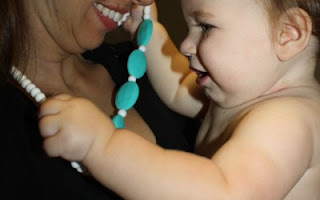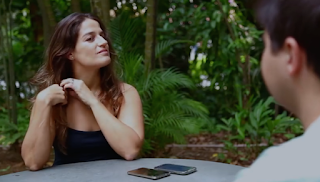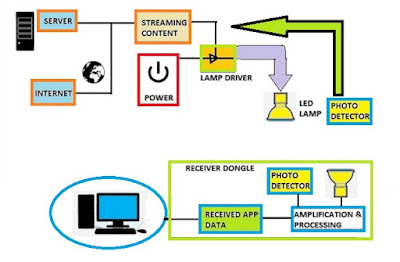 |
| Airbus 300 |
If
you ever wished for weightlessness like astronauts, here is an easy
way to feel it... Get into a Zero Gravity Plane. Zero Gravity Planes performs parabolic arcs to
create a weightless environment allowing you to float, flip and soar
as if you were in space. Parabolic flight or zero gravity flight is
an aerobatic maneuver performed by an airplane that enables brief
(15-25 sec) periods of near-zero-gravity. Astronauts feel weightless
because their space shuttle is in a state of continuous free fall to
the earth. If an astronaut on the space station drops a pen, it
doesn't look like it's falling. That's because they're all falling
together: the pen, the astronaut and the station. But they're not
falling towards Earth, they're falling around it. Because they're all
falling at the same rate, objects inside of the station appear to
float in a state we call "zero gravity" (0g), or more
accurately microgravity (1x10-6g). Objects in a state of free fall
are said to be weightless. The object's mass is the same, but it
would mark "0" on a scale. Eventhough your mass stays the
same, weight varies depending on whether you are on Earth, the moon
or in orbit. Gravitational force is a measurement of the acceleration
due to gravity that causes weight. Zero gravity is a condition of
weightlessness referring to the absence of a gravitational force
(g-force or Gs).
Because of air resistance, objects in Earth's atmosphere only travel in arcs that approximate a true parabola. In
case of a true parabolic arc in air, the only accelerative force is
gravity pulling in a vertical direction which means horizontal
velocity
remains
constant. So in order for
passengers in the plane to experience a free fall safely, the
aeroplane must climb at a steep angle, level off, and then dive,
creating a parabolic
arc,
also called a Keplerian
Trajectory or
free-fall
path.
I.e. In parabolic flight, any plane flies in a parabolic arc
involving three stages, an horizontal phase in which the
gravitational force is the same as on Earth, 1g. A second phase which
goes from 0º to 45º where the passengers weight increase up to
1.8g. Finally, for angles greater than 45º together with the
adequate speed, the 0g effect is achieved.
During
an entry phase, flight flies horizontally at an altitude of 24,000
feet, then the nose of the plane is lifted upward to an angle of
about 45 degrees(nose high) until the plane reaches around 32,000
feet where the engines are pulled back to idle. This moment is called
initiation with aircraft entering parabolic phase. As the plane goes
over the top of the arc, the centrifugal
force exerted
on the plane and everything in it cancels out the gravitational force
pulling downwards, making you feel as if you are weightless. At this
point everything in the plane, experience a sense of weightlessness
for the next 20-30 seconds. After these few seconds, at approximately
30 degrees (nose low) a gentle pull-out is started which allows the
passengers to stabilize on the aircraft floor, thus exiting from
parabola and regaining the initial level of flight.. The maneuver is
then repeated almost to 15 times. Passengers experience a pull of
nearly twice that of gravity (1.8 Gs) during the downward trajectory,
at the bottom of the path, as well as the upward climb of the flight,
which takes around 65 seconds to complete.
The
first zero gravity flights were proposed in 1949 by the German
aerospace engineer Fritz Haber and the German physicist Heinz Haber .
Both had been brought to the US after World War II as part of
Operation Paperclip. They proposed parabolic flights as a way of
simulating weightlessness. Parabolic flights are also used to examine
the effects of weightlessness on a living organism. While humans are
by far the most common passengers, non-human animals have
occasionally been involved in experiments, including a notable
experiment on how weightlessness affected a domestic cat's righting
reflex and a pigeon's attempts to navigate in a weightless state.
Zero gravity flights are
the only way to test microgravity with humans without going through
lengthy astronaut-training and flights to the International Space
Station. Parabolic flights are extremely safe and have been flown for
the past 50 years by NASA, The Russian Space Program and European
Space Agency. For this reason, parabolic flights are often used to
validate space instruments and train astronauts before spaceflight.
Zero gravity aircraft are also used for expensive leisure pursuits
and weightlessness experiments by NASA and also used in the
entertainment industry.
Along
with the experience of floating, passengers will also experience
nausea due to motion sickness during the journey, that’s why such
flights got nickname of “vomit comet”. The 1.8g assents
has a strong effect on the fluids in your ears which affect your
sense of balance, and that’s what makes you nauseous. Zero Gravity
Research Facility in Brook Park, Ohio,US is the country’s main base
for microgravity research and the world’s largest facility of its
kind. The centre is used to develop and test equipment designed for
flights on board the Space Shuttle and International Space Station
(ISS). In late 2004, Zero Gravity Corporation(ZERO-G) the became the
first company in the United States to offer zero-g flights to the
general public.
If you want to experience a
zero-gravity flight, you can book a trip on G-FORCE-ONE, a modified
Boeing 727-200, through the ZERO-G Web site or at your local Sharper
Image store for ($4,950 - £3,950) per person. It's possible to book
yourself on to a zero gravity flight from the Orlando Sanford
International Airport and Fort Lauderdale International Airport in
Florida, as well as from McCarran International Airport in Las Vegas
and the Oakland International Airport in Oakland, California. Flights
are also offered in New York and Los Angeles, as well as in Austin
and Houston in Texas. The package includes your flight, unique
merchandise and a post-flight celebration (or, depending on your
point of view, a wake for your temporary dramatic weight loss).
Passengers must be at least 15 years old if unaccompanied, or 12 if
flying with a parent or guardian.
The G-Force One aircraft
can also offer the experience of lunar gravity (the gravitational
force of the Moon where you’ll weigh around a sixth of your weight
on Earth) or Martian gravity (the level of gravity on Mars where your
weight is around a third of that on Earth) by flying a larger arc at
the top of the parabolic path This is when you can jump around the
aircraft like you are walking on the moon/Mars. Is’t it awesome.??
I think a zero-gravity
flight is the first step towards space travel, so be weightless and
get ready for your sub-orbital flight...










